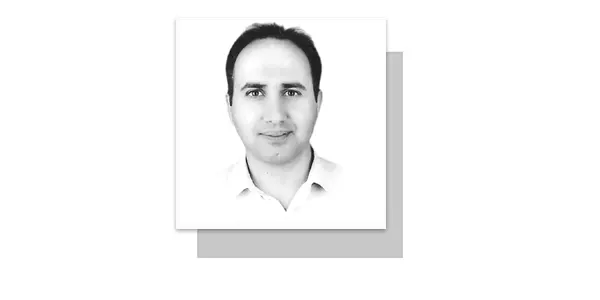LITERACY is crucial in reducing social inequality and providing equal access to opportunities and education. It promotes equality, authority and a welcoming environment, ensuring no one is left behind. It reminds young people of the transformative potential of education and provides hope for bridging social groups. Despite advancements, around 258 million children and youth worldwide remain unenrolled in school. There are 59 million primary school-age children, 62 million lower secondary school-age children and 138 million upper secondary school-age students in the total. The international community has to be quite concerned about these numbers.
Pakistan has world’s second highest number of out-of-school children (OOSC). Data show that Pakistan is facing a serious challenge to ensure education for all. According to UNICEF, an estimated 22.8 million children (aged 5-16) are out of school in Pakistan. This is the world’s second highest number of out-of-school children (OOSC). It represents 44 percent of the total population in this age group. The country is facing serious challenge to enroll and retain disadvantaged children, particularly rural girls, in schools. Nearly 10.7 million boys and 8.6 million girls are enrolled at the primary level and this drops to 3.6 million boys and 2.8 million girls at the lower secondary level. This means that after primary-school age the number of OOSC doubles. Disparities based on geographical location, gender and socio-economic status are significant. 32 percent of primary school age girls are out of school, compared to 21 percent of boys. These statistics show high numbers of out-of-school children, with significant gender disparities, across the country, but Sindh and Balochistan are much worse than other parts of the country. These statistics show that Pakistan as a state has failed to fulfil its promise of education for all.
Quaid-i-Azam Muhammad Ali, stressing the importance of education for Pakistan, sent a very vivid and powerful written message to the participants of ‘All Pakistan Education Conference in 1947’. Quaid-i-Azam, in his written message said “There is no doubt that the future of our state [Pakistan] will and must greatly depend upon the type of education we give to our children and the way in which we bring them up as future citizens of Pakistan….We should not forget that we have to compete with the world which is moving very fast….We have to see that they are fully qualified and equipped to play their part in the various branches of national life in a manner which will do honor to Pakistan”. Quaid-i-Azam stressed that education is a matter of life and death for Pakistan. All Pakistan Education Conference recognized ‘Universal Primary Education’ as imperative. In 1959, the Commission on National Education recommended quality compulsory education for children. Article 37-B of the 1973 Constitution states “The State shall remove illiteracy and provide free and compulsory secondary education within minimum possible period”. Article 38-D of the 1973 constitution states “The State shall provide basic necessities of life, such as food, clothing, housing, education and medical relief, for all citizens, irrespective of sex, caste, creed or race”. In 2010, Article 25-A of the 1973 Constitution was introduced. Article 25-A outlines, “The State shall provide free and compulsory education to all children of the age of five to sixteen years in such a manner as may be determined by law”.
Besides these national commitments, Pakistan is under many international obligations and commitments to provide free and compulsory education to all her citizens. Pakistan, under Article 28 of the United Nations Convention on the Rights of Children (UNCRC), has promised for the provision of free primary education to all the children and access to scientific and technical knowledge through modern teaching methods in the country. Pakistan could not provide primary education to all children as per commitment under the Millennium Development Goal. Similarly, goal 4 of Sustainable Development Goals obligates Pakistan to “ensure inclusive and equitable quality education and promote lifelong learning opportunities for all”. Despite these national and international commitments, education never received central priority and place in Pakistan. Political rhetoric, fancy meeting in luxury hotels, distribution of free textbooks, discourses of uniform curriculum and government dependence on donor agencies are not enough to have all 5-16 years of children in schools. The current budget allocation and efforts are not enough to retain the most disadvantaged in school. Government of Pakistan needs targeted and concerted efforts to reach the disadvantaged children, especially girls who are forced by social and cultural forces to stay home. The number of out of school children and the ratio of drop out from schools serve as wake-up call to mobilise the resources needed to guarantee basic education for every child in Pakistan, once and for all. To realize the promise of universal education for every child, government of Pakistan needs to make serious commitment and sufficient budget allocation being crucial for Pakistan’s development, serving as a foundation for higher education, enhancing literacy and numeracy skills, promoting empowerment, fostering social development, promoting health awareness, driving economic growth, reducing inequality, promoting national stability and enhancing global competitiveness.
The government of Pakistan must enrol all 5-16 years of children into school. This should be done religiously, the disadvantaged families must be assessed and motivated to allow their children to stay in school through the secondary level and improving the quality of the their schooling and learning they receive throughout their schooling. The achievement of these goals needs genuine political will and sufficient budget allocation. There should be no alternative opinion on these priorities as education and success of every child is essential for the future of Pakistan.
—The writer is PhD in Political Science and visiting faculty at QAU Islamabad. His area of specialization is political development and social change.
Email: zafarkhansafdar@yahoo.com
views expressed are writer’s own.










